In the ever-evolving world of digital design, modern web layouts have emerged as a cornerstone of contemporary web development. These innovative designs not only redefine how information is presented but also revolutionize user interaction, creating immersive experiences that captivate audiences. Whether you’re crafting a portfolio, an e-commerce site, or a corporate landing page, understanding the essence of modern web layout inspiration is crucial for standing out in a crowded digital space. This article delves into the key elements and design principles that define modern web layouts, exploring how minimalist approaches, responsive design, and cutting-edge visual techniques shape the digital landscape. From typography and color palettes to flat design and blur effects, we’ll uncover the secrets behind creating websites that are not only visually stunning but also functionally superior. Join us as we embark on a journey to explore the latest trends and best practices in modern web design, ensuring your projects resonate with users and leave a lasting impression.
Key Takeaways
– Responsive Design: Modern layouts adapt seamlessly to all devices, ensuring optimal viewing experiences.
– Clean Typography: Legible fonts and proper spacing enhance readability and user experience.
– Intuitive Navigation: Clear pathways and sticky headers make sites easy to explore.
– Visual Hierarchy: Size, color, and placement guide user attention effectively.
– Effective Spacing: Reduces clutter and improves content digestibility.
– Color and Imagery Strategy: Cohesive palettes and balanced visuals enhance brand identity.
– Microinteractions: Subtle animations improve user engagement.
– Accessibility: Designs meet standards like WCAG for inclusivity.
– Performance Optimization: Fast-loading sites boost user satisfaction and SEO rankings.
– Consistency and Cohesion: Uniform design languages reinforce brand identity.
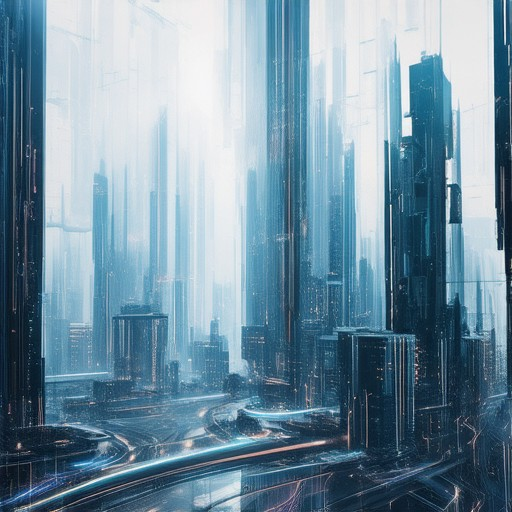
What Makes a Modern Web Layout Stand Out
A modern web layout distinguishes itself from traditional designs through several key features and approaches:
- Responsive Design : Modern layouts are inherently responsive, meaning they adapt seamlessly to various screen sizes and devices. This ensures consistency across desktops, tablets, and mobile devices, providing a unified user experience.
- Advanced Technology Integration : Modern web layouts leverage cutting-edge technologies like CSS Grid, Flexbox, and JavaScript frameworks. These tools enable complex, dynamic, and visually appealing designs that were once impossible to achieve with traditional methods.
- Minimalist and Clean Aesthetics : Modern designs often embrace simplicity and minimalism, focusing on whitespace, subtle shadows, and clean typography. This approach creates a more organized and user-friendly interface compared to traditional layouts that may feel cluttered.
- Flat Design : Flat design, characterized by two-dimensional elements and uniform styling, is a hallmark of modern web design. It avoids excessive depth and dimension, making interfaces more intuitive and easier to navigate.
- Interactive Experiences : Modern layouts frequently incorporate interactive elements, such as hover effects, animations, and dynamic content. These features engage users more effectively than static traditional designs.
- Performance Optimization : Modern developers place a strong emphasis on performance, optimizing code for speed and efficiency. Techniques like lazy loading, code minification, and caching ensure fast load times, which is critical for user satisfaction.
- Cross-Device Compatibility : Modern layouts are built with cross-device compatibility in mind, ensuring they look and function well on all types of devices. This contrasts with traditional designs that may only focus on a specific platform.
- Seamless User Experience : Modern web layouts often prioritize user experience (UX), incorporating features like smooth scrolling, easy navigation, and intuitive interactions. These elements enhance usability beyond what traditional designs typically offer.
- Content Strategy Integration : Modern layouts often integrate sophisticated content strategies, such as component-based architecture and reusable blocks, allowing for greater flexibility and scalability in content delivery.
- Progressive Enhancement : Modern web design practices emphasize progressive enhancement, ensuring that basic functionality remains intact even when advanced features are unsupported. This approach improves robustness and accessibility compared to traditional designs.
By combining these elements, modern web layouts not only stand out but also deliver better user experiences and outcomes.
Key Design Principles Behind Modern Web Layouts
Modern web layouts are built upon several core design principles that aim to create user-friendly, visually appealing, and functional experiences. These principles ensure that websites are accessible, responsive, and engaging across various devices and screen sizes.
1. Responsive Design
Responsive design is a cornerstone of modern web layout principles. It ensures that websites adapt to different screen sizes and devices, providing a seamless user experience. Key aspects include:
- Flexible grid systems that adjust based on screen width
- Media queries for tailored stylesheets
- Mobile-first approach, focusing on smaller screens first
This principle is supported by tools like CSS Media Queries and frameworks like Bootstrap or Foundation.
2. Clean and Minimalistic UI/UX
Modern web designs often prioritize simplicity and usability. Clean layouts focus on:
- Clarity in navigation
- Readable typography
- Sufficient white space
- Consistent color scheme
- Intuitive visual hierarchy
Examples of minimalistic design can be found on sites like Smashing Magazine and CSS-Tricks .
3. Consistent Navigation and Branding
Uniformity in navigation helps users easily find their way around a website. Key elements include:
- Fixed header or footer navigation
- Consistent logo placement
- Standardized menu items
- Brand colors and typography
Branding consistency is crucial for reinforcing a website’s identity, as demonstrated by leading platforms like Google and Facebook .
4. Performance Optimization
Fast-loading websites are essential for user satisfaction. Key performance considerations include:
- Optimized image compression
- Lazy loading of images
- Minimized CSS and JavaScript files
- Efficient caching mechanisms
Performance optimization techniques are often discussed in-depth on resources like Google Developers and CDN.js .
5. Accessibility Considerations
Modern web layouts must cater to users with diverse abilities. Key accessibility features include:
- Alt texts for images
- Keyboard navigation support
- Screen reader compatibility
- Contrast ratios for readability
Accessibility guidelines are detailed in documents like WCAG 2.1 and implemented by companies like Microsoft .
Conclusion
By adhering to these principles, web designers can create layouts that are not only visually appealing but also functional, user-friendly, and inclusive. Continuous innovation in design tools and techniques ensures that modern web layouts evolve to meet the needs of today’s users.
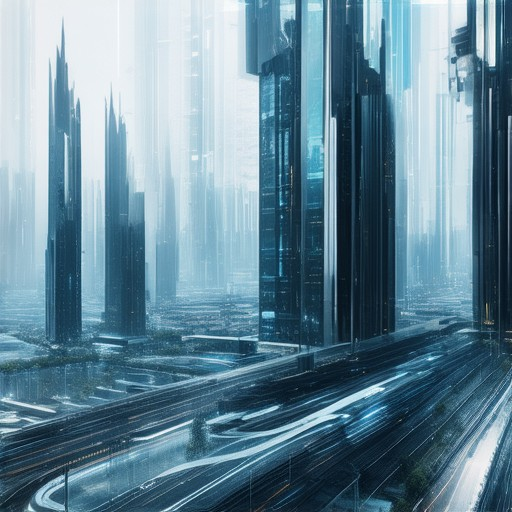
Key Elements of a Modern Web Layout
A modern web layout is designed to be visually appealing, functional, and user-friendly. Here are the essential components that define contemporary web design:
- Responsive Design :
- Ensures the layout adapts seamlessly to various screen sizes, from desktops to mobile devices.
- Uses flexible grids, fluid images, and media queries to adjust content presentation dynamically.
- Example: A website optimized for both horizontal and vertical scrolling experiences.
- Clean Typography :
- Features readable fonts like sans-serif (e.g., Helvetica, Arial) for better legibility.
- Implements font sizing, spacing, and color contrast to enhance readability.
- Example: Proper hierarchy and spacing between headings, paragraphs, and other text elements.
- Intuitive Navigation :
- Provides clear pathways for users to explore the site efficiently.
- Utilizes sticky headers, collapsible menus, and logical categorization for easy navigation.
- Example: A fixed navigation bar with dropdown menus for quick access to content.
- Visual Hierarchy :
- Establishes a clear pecking order of elements to guide user attention.
- Uses size, color, and placement to emphasize important features.
- Example: Highlighting a hero image or call-to-action button with contrasting colors.
- Effective Spacing and Alignment :
- Incorporates ample white space to reduce visual clutter and improve content digestibility.
- Aligns elements horizontally and vertically to create a balanced aesthetic.
- Example: Consistent padding around buttons and forms for a polished look.
- Color and Imagery Strategy :
- Selects a cohesive color palette that aligns with the brand identity while ensuring high contrast for readability.
- Balances imagery with text to maintain visual interest without overwhelming the user.
- Example: Using background images subtly complementing the content without distracting from readability.
- Microinteractions :
- Enhances user experience through subtle animations and feedback mechanisms.
- Includes hover effects, form validations, and loading indicators for smoother interactions.
- Example: A button morphing slightly upon hover to indicate interactivity.
- Accessibility Considerations :
- Ensures the layout is usable by individuals with disabilities, including screen readers.
- Adheres to standards like WCAG (Web Content Accessibility Guidelines).
- Example: Proper labeling of buttons and forms for keyboard navigation.
- Performance Optimization :
- Minimizes load times by optimizing images, leveraging browser caching, and using efficient CSS.
- Delivers fast-loading pages to improve user satisfaction and reduce bounce rates.
- Example: Implementing lazy loading for images and critical CSS delivery.
- Consistency and Cohesion :
- Maintains a uniform design language across all pages to reinforce brand identity.
- Ensures consistent styling of elements like buttons, links, and typography.
- Example: A consistent color scheme applied across all interactive elements.
By thoughtfully integrating these elements, a modern web layout not only enhances user experience but also ensures the site is technically sound, visually appealing, and easily navigable across all devices.

Key Elements of a Modern Web Layout
A modern web layout is designed to be visually appealing, functional, and user-friendly. Here are the essential components that define contemporary web design:
- Responsive Design :
- Ensures the layout adapts seamlessly to various screen sizes, from desktops to mobile devices.
- Uses flexible grids, fluid images, and media queries to adjust content presentation dynamically.
- Example: A website optimized for both horizontal and vertical scrolling experiences.
- Clean Typography :
- Features readable fonts like sans-serif (e.g., Helvetica, Arial) for better legibility.
- Implements font sizing, spacing, and color contrast to enhance readability.
- Example: Proper hierarchy and spacing between headings, paragraphs, and other text elements.
- Intuitive Navigation :
- Provides clear pathways for users to explore the site efficiently.
- Utilizes sticky headers, collapsible menus, and logical categorization for easy navigation.
- Example: A fixed navigation bar with dropdown menus for quick access to content.
- Visual Hierarchy :
- Establishes a clear pecking order of elements to guide user attention.
- Uses size, color, and placement to emphasize important features.
- Example: Highlighting a hero image or call-to-action button with contrasting colors.
- Effective Spacing and Alignment :
- Incorporates ample white space to reduce visual clutter and improve content digestibility.
- Aligns elements horizontally and vertically to create a balanced aesthetic.
- Example: Consistent padding around buttons and forms for a polished look.
- Color and Imagery Strategy :
- Selects a cohesive color palette that aligns with the brand identity while ensuring high contrast for readability.
- Balances imagery with text to maintain visual interest without overwhelming the user.
- Example: Using background images subtly complementing the content without distracting from readability.
- Microinteractions :
- Enhances user experience through subtle animations and feedback mechanisms.
- Includes hover effects, form validations, and loading indicators for smoother interactions.
- Example: A button morphing slightly upon hover to indicate interactivity.
- Accessibility Considerations :
- Ensures the layout is usable by individuals with disabilities, including screen readers.
- Adheres to standards like WCAG (Web Content Accessibility Guidelines).
- Example: Proper labeling of buttons and forms for keyboard navigation.
- Performance Optimization :
- Minimizes load times by optimizing images, leveraging browser caching, and using efficient CSS.
- Delivers fast-loading pages to improve user satisfaction and reduce bounce rates.
- Example: Implementing lazy loading for images and critical CSS delivery.
- Consistency and Cohesion :
- Maintains a uniform design language across all pages to reinforce brand identity.
- Ensures consistent styling of elements like buttons, links, and typography.
- Example: A consistent color scheme applied across all interactive elements.
By thoughtfully integrating these elements, a modern web layout not only enhances user experience but also ensures the site is technically sound, visually appealing, and easily navigable across all devices.
Key Elements of a Modern Web Layout
A modern web layout is designed to be visually appealing, functional, and user-friendly. Here are the essential components that define contemporary web design:
- Responsive Design :
- Ensures the layout adapts seamlessly to various screen sizes, from desktops to mobile devices.
- Uses flexible grids, fluid images, and media queries to adjust content presentation dynamically.
- Example: A website optimized for both horizontal and vertical scrolling experiences.
- Clean Typography :
- Features readable fonts like sans-serif (e.g., Helvetica, Arial) for better legibility.
- Implements font sizing, spacing, and color contrast to enhance readability.
- Example: Proper hierarchy and spacing between headings, paragraphs, and other text elements.
- Intuitive Navigation :
- Provides clear pathways for users to explore the site efficiently.
- Utilizes sticky headers, collapsible menus, and logical categorization for easy navigation.
- Example: A fixed navigation bar with dropdown menus for quick access to content.
- Visual Hierarchy :
- Establishes a clear pecking order of elements to guide user attention.
- Uses size, color, and placement to emphasize important features.
- Example: Highlighting a hero image or call-to-action button with contrasting colors.
- Effective Spacing and Alignment :
- Incorporates ample white space to reduce visual clutter and improve content digestibility.
- Aligns elements horizontally and vertically to create a balanced aesthetic.
- Example: Consistent padding around buttons and forms for a polished look.
- Color and Imagery Strategy :
- Selects a cohesive color palette that aligns with the brand identity while ensuring high contrast for readability.
- Balances imagery with text to maintain visual interest without overwhelming the user.
- Example: Using background images subtly complementing the content without distracting from readability.
- Microinteractions :
- Enhances user experience through subtle animations and feedback mechanisms.
- Includes hover effects, form validations, and loading indicators for smoother interactions.
- Example: A button morphing slightly upon hover to indicate interactivity.
- Accessibility Considerations :
- Ensures the layout is usable by individuals with disabilities, including screen readers.
- Adheres to standards like WCAG (Web Content Accessibility Guidelines).
- Example: Proper labeling of buttons and forms for keyboard navigation.
- Performance Optimization :
- Minimizes load times by optimizing images, leveraging browser caching, and using efficient CSS.
- Delivers fast-loading pages to improve user satisfaction and reduce bounce rates.
- Example: Implementing lazy loading for images and critical CSS delivery.
- Consistency and Cohesion :
- Maintains a uniform design language across all pages to reinforce brand identity.
- Ensures consistent styling of elements like buttons, links, and typography.
- Example: A consistent color scheme applied across all interactive elements.
By thoughtfully integrating these elements, a modern web layout not only enhances user experience but also ensures the site is technically sound, visually appealing, and easily navigable across all devices.
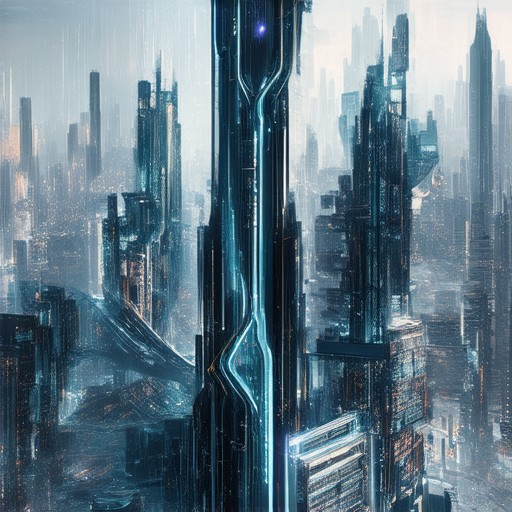
Key Elements That Define a Modern Web Layout
A modern web layout is characterized by several critical components that enhance usability, aesthetics, and performance. Here’s a breakdown of the most important elements:
- Responsive Design: Modern web layouts are designed to adapt to various screen sizes and devices. This ensures that the website looks great on desktops, tablets, and mobile phones.
- Clean User Interface (UI): Minimalistic designs with intuitive navigation and clear visual hierarchy help users quickly find information and interact with the site.
- Content Strategy: Effective content organization, SEO optimization, and accessibility features are crucial for both user experience and search engine ranking.
- Performance Optimization: Fast-loading websites with optimized images, reduced code bloat, and efficient use of browser caching are essential for user satisfaction and search engine favorability.
- Seamless User Experience (UX): Smooth transitions, loading animations, and form validation mechanisms contribute to a polished user interaction.
- Visual Hierarchy: Clear typography, spacing, and color contrast guide users’ attention, ensuring they easily navigate through the content.
- Browser Compatibility: Modern layouts must work across all major browsers, requiring thorough cross-browser testing to ensure consistency.
- Use of CSS Frameworks: Tools like Bootstrap, Tailwind CSS, or Foundation help developers create consistent and responsive designs faster.
These elements work together to create a cohesive, functional, and visually appealing web presence that caters to modern user expectations. By focusing on these aspects, designers and developers can deliver websites that are not only attractive but also highly functional and user-friendly.
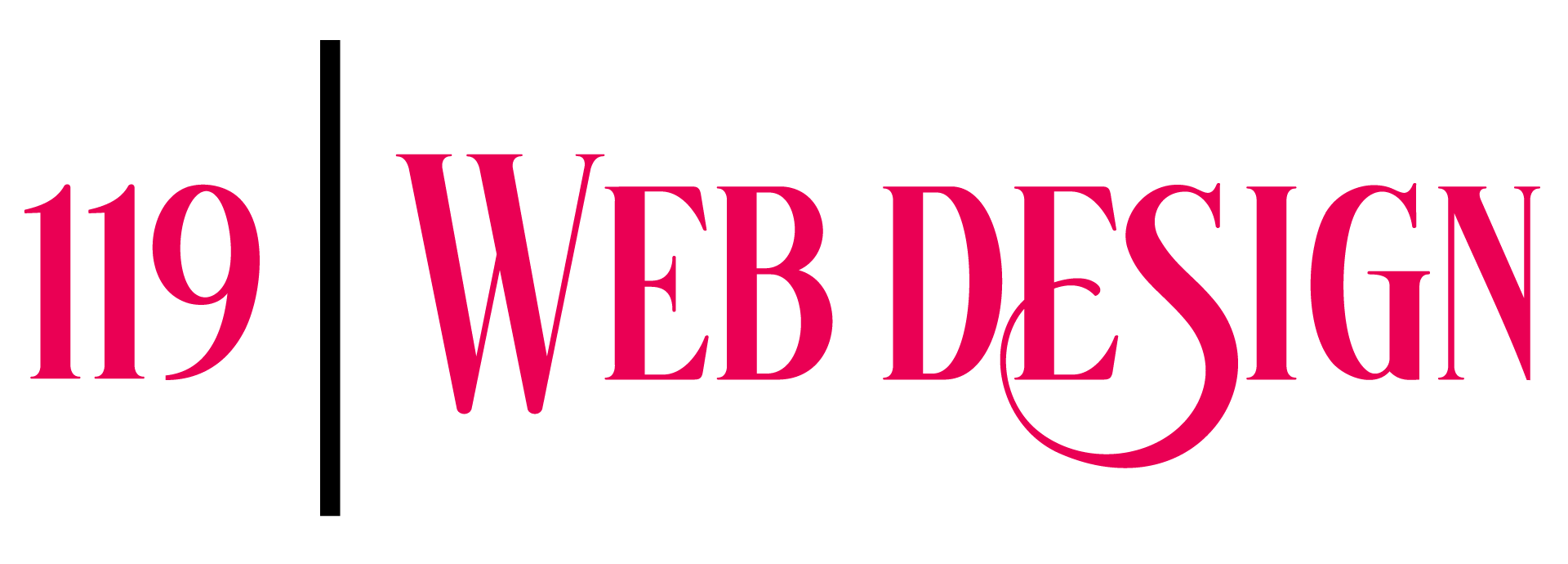


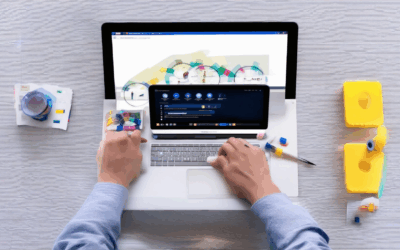
0 Comments